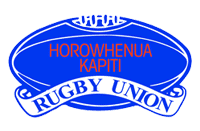What we’re going to do:
- Ensure concussion is a prominent part of our annual RugbySmart courses.
- Financially assist players and families with payment of medical bills relating to concussion.
- Provide follow up support and guidance to concussed players around the graduated return to play guidelines.
- Be the conduit for New Zealand Rugby and District Health Board resources
CONCUSSION – RugbySmart
We want to ensure that anyone involved in rugby – players, coaches, refs and family – know what to look out for and what to do when they suspect a player has sustained a concussion.
We all have a role to play in recognizing, removing and helping to manage concussions. For more info around Concussion in rugby, visit: https://www.rugbysmart.co.nz/injuries/concussion/
BLUE CARD – What does this mean?
The purpose of the Blue Card Initiative is to enable referees to remove players from a match if they are suspected of sustaining a concussion. However, it is important to remember that regardless of whether a concussion is Blue Carded or not, that player is required to complete the minimum stand down period and follow the Graduated Return to Play.
As a minimum, we will cover the cost for all blued carded and concussed players’ medical clearance examinations. Players need to keep their receipts, so they can be reimbursed and get in touch with us around this.
GRADUATED RETURN TO PLAY
During this stand down period players must complete the Graduated Return to Learn/Work and the Return to Play (GRTP) program. These programs are based on international best practice with the goal of helping players recover and get back to school/work and sport.
An athlete should not go back to sports until they are back to school or work without symptoms getting significantly worse and no longer needing any changes in their schedule.
